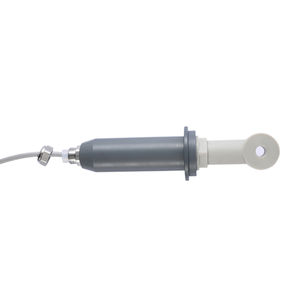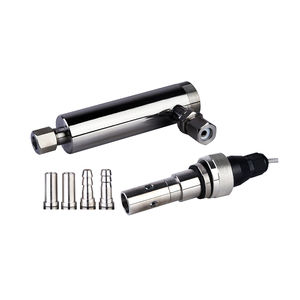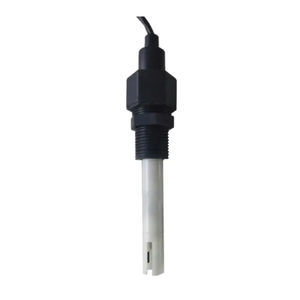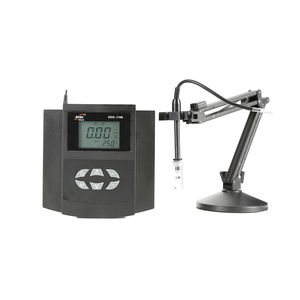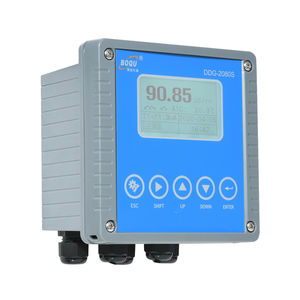
- Metrology - Laboratory
- Analytical Instrumentation
- Digital conductivity sensor
- Shanghai Boqu Instrument Co.,Ltd.
- Company
- Products
- Catalogs
- News & Trends
- Exhibitions
Digital conductivity sensor BH-485-DD-10.0for waterRS-485Modbus RTU
Add to favorites
Compare this product
Characteristics
- Technology
- digital
- Applications
- for water
- Output
- Modbus RTU, RS-485
- Other characteristics
- with temperature measurement
Description
★ Measure range: 0-20000us/cm
★ Features: rapid response, low maintenance cost
· Can work stably for a long time.
· Built in temperature sensor, real-time temperature compensation.
· The operation is simple, the electrode parameters can be achieved by remote settings, remote calibration of electrode.
· 24V DC power supply.
Conductivity is a measure of water’s capability to pass electrical flow. This ability is directly related to the concentration of ions in the water
1. These conductive ions come from dissolved salts and inorganic materials such as alkalis, chlorides, sulfides and carbonate compounds
2. Compounds that dissolve into ions are also known as electrolytes 40. The more ions that are present, the higher the conductivity of water. Likewise, the fewer ions that are in the water, the less conductive it is. Distilled or deionized water can act as an insulator due to its very low (if not negligible) conductivity value
3. Sea water, on the other hand, has a very high conductivity.
Ions conduct electricity due to their positive and negative charges
When electrolytes dissolve in water, they split into positively charged (cation) and negatively charged (anion) particles. As the dissolved substances split in water, the concentrations of each positive and negative charge remain equal. This means that even though the conductivity of water increases with added ions, it remains electrically neutral
Catalogs
No catalogs are available for this product.
See all of Shanghai Boqu Instrument Co.,Ltd.‘s catalogsOther Shanghai Boqu Instrument Co.,Ltd. products
Conductivity
Related Searches
- Gas analyser
- Concentration analyser
- Monitoring analyser
- Liquids analyser
- Automated analyzer
- Dust analyzer
- Process analyser
- Portable analyser
- Continuous analyser
- Integration analyser
- Water analyser
- Real-time analyser
- Digital analyser
- In-line analyser
- Calibration analyser
- Temperature analyser
- Sampling analyser
- Waterproof analyzer
- Analyser for the food industry
- RS485 analyser
*Prices are pre-tax. They exclude delivery charges and customs duties and do not include additional charges for installation or activation options. Prices are indicative only and may vary by country, with changes to the cost of raw materials and exchange rates.


